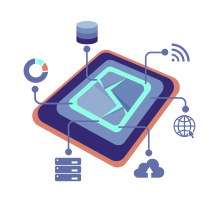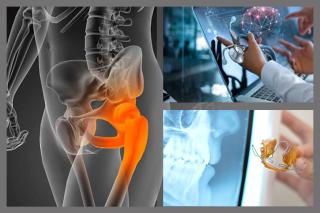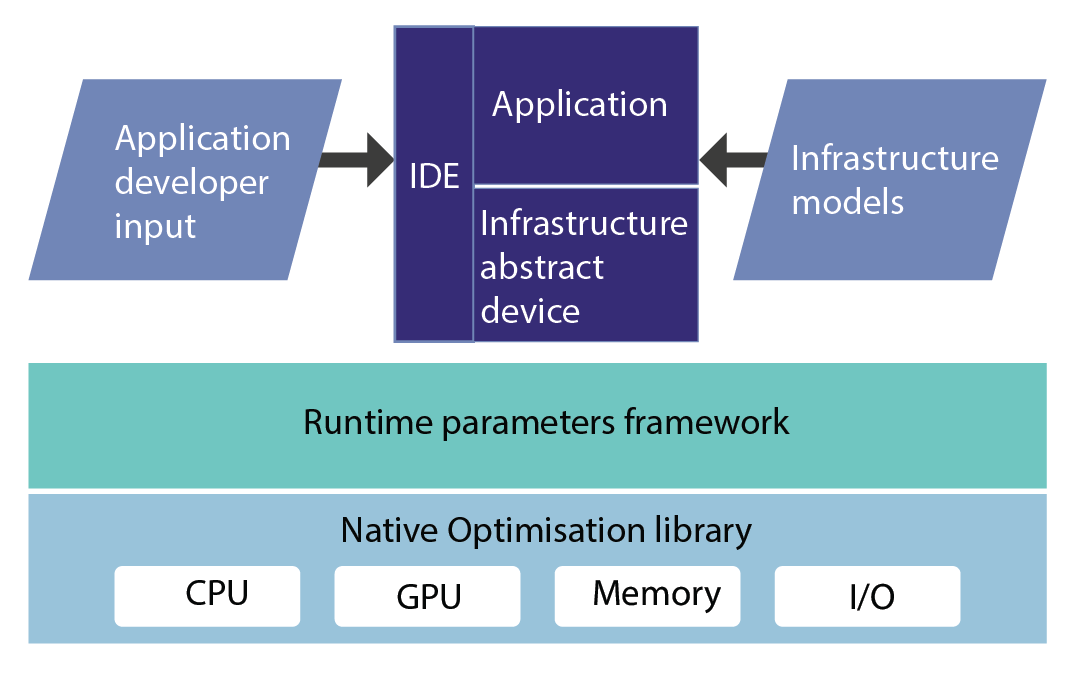Increasing simplicity in heterogeneous systems
The SODALITE vision

SODALITE is solving the deployment problem over the existing infrastructure, with particular focus on application management, performance.Thus, the project envisages a solution able to support Digital Transformation of European Industry through:
- increasing design and runtime effectiveness of software-defined infrastructures, to ensure high-performance execution over dynamic heterogeneous execution environments.
- increasing simplicity of modelling applications and infrastructures, to improve manageability, collaboration, and time to market.
The high-performance execution we envision, as governed by SODALITE, enables developers to describe their applications once, using high level semantic abstractions and targeting generic abstracted execution platform to bring-up a runtime bootstrap environment.
A wide range of applications
The SODALITE Use Cases
SODALITE aims to provide an optimised, highly resilient heterogeneous execution environment enabling operational transparency between Cloud and HPC infrastructures.
SODALITE technologies are applied and demonstrated in the following diverse range of use cases, highlighting a mixture of Cloud and HPC scenarios across varying workloads and unique infrastructure

Assessment and decision-support system for spinal operations consisting of a data store component, capable of providing efficient data access from heterogeneous compute resources and simulation process chain facilitating comprehensive data analytics for in-silico clinical trials.

The Vehicle IoT use case builds on ADTP’s KnowGo Car data management and services platform for connected vehicles. KnowGo Car deals primarily with providing a blending of automotive and personal data to data-driven vehicle services on a basis of driver consent (enabled by the GDPR), while aiding the data service provider in managing their end-to-end regulatory compliance, including in cross-border service delivery.

An innovative tool demonstrator which enables the capillary observation of the continuous health status of mountain environments supporting social engagement of societies in software-aided continuous monitoring of Alpine regions.
A powerfull Stack
The SODALITE Impact
SODALITE’s toolset will be a powerful tool for digital innovation and transformation in the European Industry towards Industry 4.0. SODALITE’s toolset:
Increases design and runtime effectiveness of software defined infrastructures, to ensure high-performance execution over dynamic heterogeneous execution environments. Enhances simplicity of modelling applications and infrastructures for better manageability, stronger collaborations and a faster time to market.
Increases productivity of scientists and researchers by abstracting the complexity of heterogeneous infrastructures and hardware technologies, thus enabling ease of use for end user.
Enables optimal utilisation of resources in a datacenter or supercomputing facility which results in energy efficiency and reduced cost
How Does It Work?
“The SODALITE Technology”
-
SODALITE attempts to bring the vast knowledge of performance optimisation accrued by the HPC industry over decades into the cloud computing area. Moreover, it aims at exploiting a model-driven approach, empowered by ontological reasoning, to support Application DevOps experts in configuring, deploying and operating their complex applications on heterogeneous resources.
Performance abstractions are provided in various forms, to be used in combination with the hardware abstractions and the Runtime system.
The SODALITE optimisation abstraction framework is summarised in the diagram below. Through the use of the IDE, application developers build code using abstract devices that lean on the infrastructure models, which resolve to certain native instantiations of the application tuned for execution on the given hardware.
Additional runtime parameters are able to be applied, further improving application performance. -
SODALITE will produce several tangible results:
- A pattern-based abstraction library that includes application, infrastructure, and performance abstractions.
- An automatic Infrastructure as Code (IaC) engine that not only facilitates the development process, but also reduces deploying errors and consequently the required time and cost.
- A design and programming model for both full-stack applications and infrastructures based on the abstraction library.
- A deployment framework that enables the static optimization of abstracted applications onto specific infrastructure.
- Automated static and run-time optimization and management of applications.
-
Thanks to these results, SODALITE will be able to address the needs of the following actors:
- Application Ops Experts. They are in charge of operating the applications and, as such, are in charge of all the aspects that refer to its deployment, execution, optimization and monitoring. They know the applications to execute and its requirements in terms of both deployment/execution environment and quality of service.
- Resource Experts (RE). They are in charge of dealing with the different resources required to deploy and execute the application. RE are in charge of application component technologies, of cloud, HPC, and GPU-based computing infrastructures, or of middleware solutions for both storing data and allowing components to communicate.
- Quality Experts (QE). They are responsible for the quality of service both provided by the execution infrastructure and required by the executing application. Being part of the SODALITE ecosystem, they are in charge of offering libraries of patterns for addressing specific performance and quality problems in the SODALITE applications.
